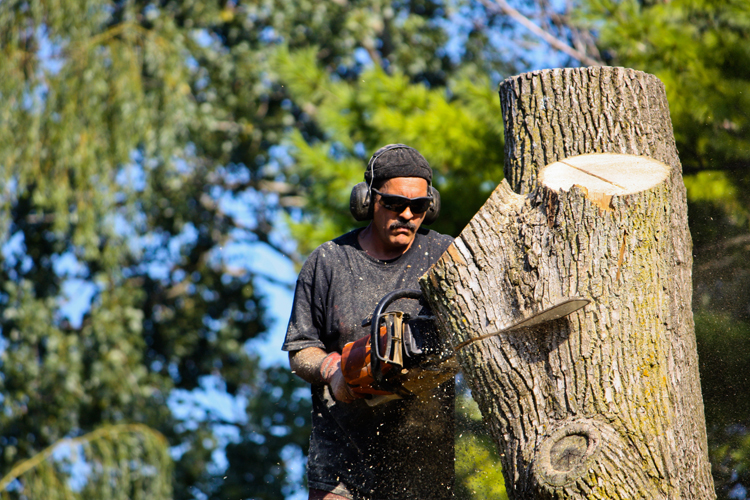Investigating Tree Management: A Domain Full of Opportunities

Arboriculture is a fascinating field that combines science, artistic expression, and sustainability, creating a rich tapestry of possibilities for those dedicated about trees. As urban landscapes become more and more developed, the role of qualified arborists has not been more important. These experts are not just tree guardians; they are stewards of our urban forests, ensuring that trees prosper in our communities while minimizing potential dangers.
With a deep understanding of tree botany and ecology, arborists play a critical role in preserving the health and beauty of trees in our neighborhoods. From tree pruning and disease diagnosis to risk assessments and storm cleanup, their expertise helps preserve the vital benefits trees provide, such as improved air quality and increased property value. This article will explore the many aspects of arboriculture, showcasing why hiring a qualified arborist matters and the substantial impact they have on both metropolitan and natural environments. Whether you're a property owner looking to care for your trees or someone curious about pursuing a career in this rewarding field, let’s dive into the world of arboriculture and discover the possibilities it provides.
The Significance of Employing Qualified Tree Care Professionals
Hiring a qualified arborist is essential for maintaining the well-being and longevity of your trees. Qualified arborists have the expertise and skills gained through extensive training and practical experience. They are proficient in tree biology, correct care techniques, and the most up-to-date industry standards. This expertise enables them to assess your trees thoroughly and provide the best care, whether it’s for health maintenance, security concerns, or aesthetic enhancement.
In addition, licensed arborists bring a level of professionalism and accountability to their work. They generally carry insurance and adhere to safety regulations, which protects both themselves and their clients. This commitment to safety is particularly important when handling possibly hazardous situations, such as tree removal or pruning in urban areas. Employing a professional reduces the risk of incidents and guarantees that the job is done right the first time.
Lastly, the value of trees in landscaping cannot be underestimated, and certified arborists help increase this value. They provide insights on tree health, growth patterns, and maintenance schedules, contributing to a flourishing landscape that enhances property value. With their guidance, property owners can make informed decisions that promote tree longevity and contribute to a stunning, sustainable environment.
Critical Methods and Equipment in Tree Management
Tree care encompasses several crucial methods that guarantee the well-being and safety of woody plants. Licensed arborists utilize certain methods like tree pruning, which involves the strategic elimination of limbs to enhance tree formation and foster growth. They understand the principles behind shearing, recognizing when and how to prune for optimal effects. Additionally, regular tree inspections are vital, allowing arborists to check tree status and spot potential problems before they grow into major concerns.
The equipment used by arborists are essential for efficient tree management. Key gear consists of climbing ropes, harnesses, and pruning saws, engineered for secure access and precise cuts. Chain saws, chippers, and stump grinders are also widely used, making tree disposal and upkeep tasks more productive. Arborists are skilled in using these instruments effectively, ensuring that both they and the trees they work on are safe during operations.
Another important element of arboriculture is the focus on environmental stewardship. Arborists promote for methods that promote tree preservation and environmental health. They often engage in tree planting programs and inform the public about the advantages of proper tree care, including enhancing property worth and diminishing urban heat. With their skills, arborists play a crucial role in nurturing a healthy urban environment and guaranteeing that communities can flourish alongside their green areas.
Tree Care: Perspectives and Updates for the Years Ahead
As city areas continue to expand, the role of tree specialists is becoming increasingly critical in preserving the well-being and viability of our arboreal populations. Moving forward, the trend is toward integrating technology into tree care management. Tools such as drones and programs for tree record management are helping arborists better determine tree status and strategize maintenance for upkeep. This technology-based approach allows for more rapid identification of ailments and hazards, enhancing their ability to preserve urban green spaces.
Moreover, with a growing priority on environmental protection, forestry experts are increasingly dedicated on adopting strategies that encourage variety of species and ecological health. This includes advocating for indigenous tree types that are better equipped to climatic conditions and diseases, which can help improve city ecosystems for various fauna. Forestry professionals are also becoming integral in shaping community awareness around tree planting initiatives and safeguarding efforts aimed at fighting climate change, fostering greater environmental responsibility.
Finally, learning and training for future tree care specialists are evolving to address the needs of the years ahead. There is a drive for more inclusive certification tracks that focus on a concentration on environmental concepts, disease prevention, and the use of sustainable practices. Continued More helpful hints through training sessions and conferences ensures that forestry experts stay updated on the most recent research and innovations in tree care. This persistent education not only improves the skills of foresters but also equips them to address the challenges of municipal tree management as our cities expand and evolve.

